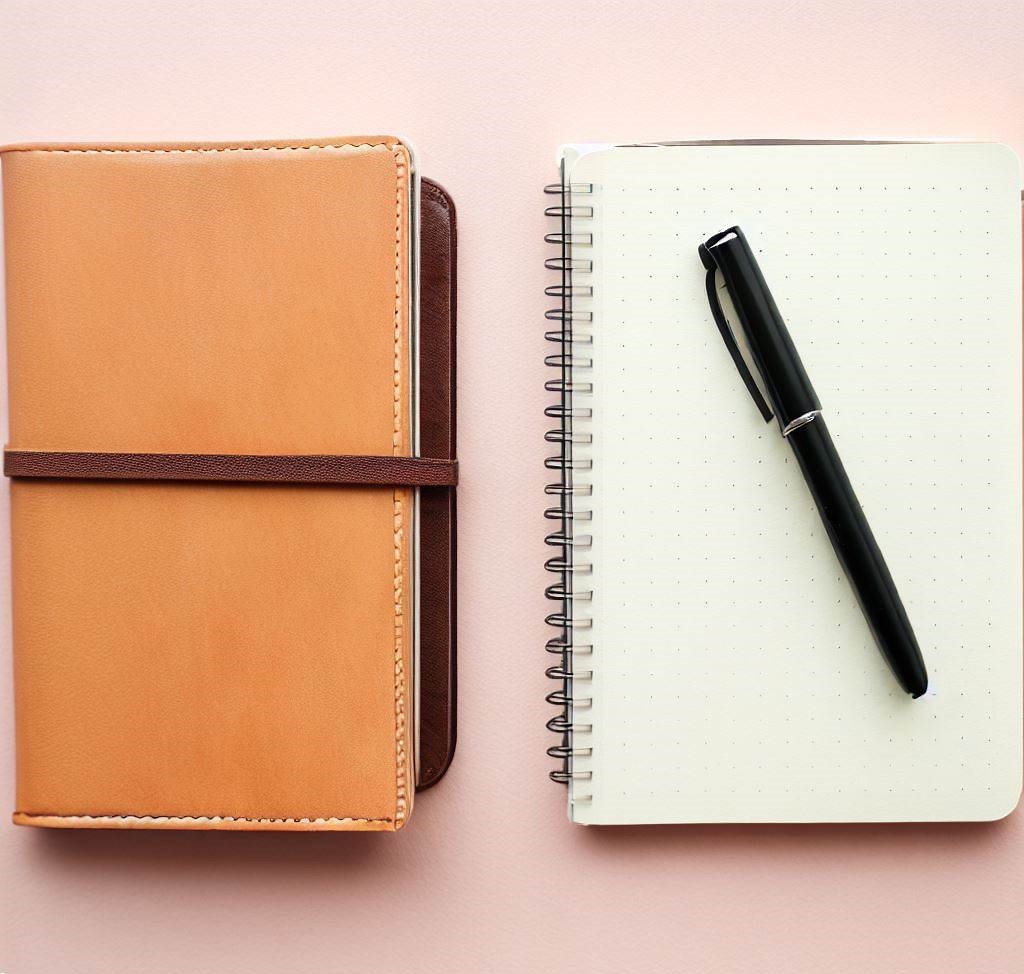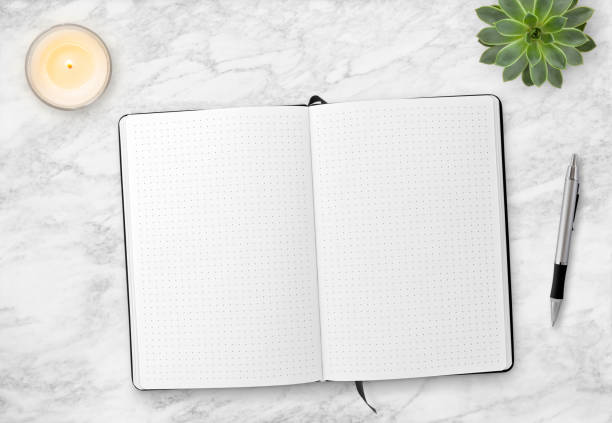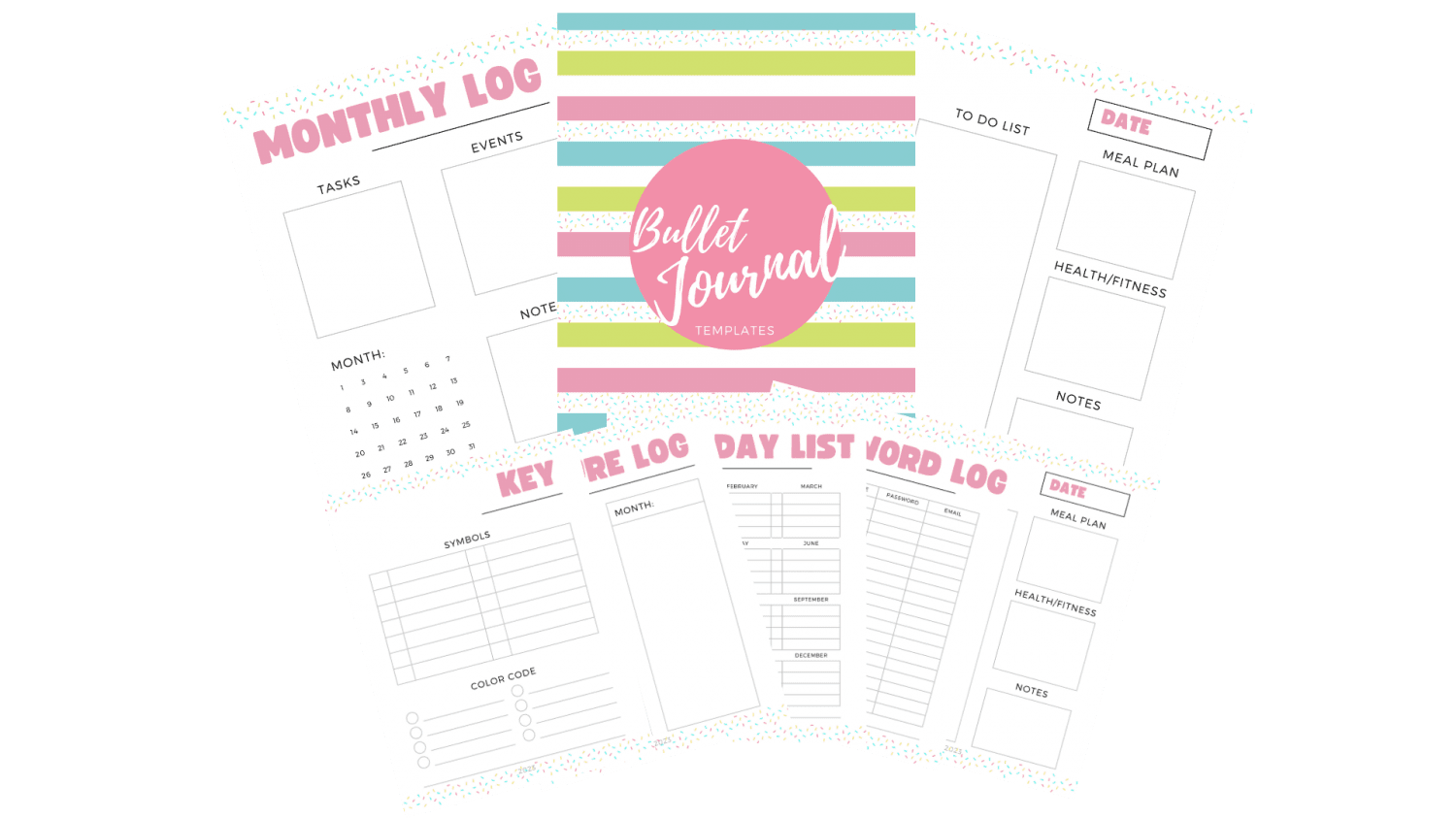As someone who has been journaling for years, I’ve experienced firsthand the benefits of keeping a record of my thoughts, feelings, and experiences.
Not only has it helped me process difficult emotions and gain clarity on my goals, but it’s also provided me with a way to reflect on my growth and progress over time.
However, with the rise of bullet journaling in recent years, I’ve also seen a lot of confusion about the differences between a traditional journal and a bullet journal.
While both serve the purpose of recording your life, they have distinct differences in structure and function.
In this post, I’ll provide an overview of what journaling and bullet journaling is, and I’ll discuss the differences between the two.
Whether you’re a seasoned journaler or just starting out, this post will help you determine which style of journaling might be best for you.
What Constitutes a Journal? (Understanding the Basics)
When you think of a journal, you might picture a diary with a lock and key or a notebook filled with daily musings.
While those are both types of journals, the term can encompass a variety of different types of writing.
At its core, journaling involves the act of recording your thoughts, feelings, and experiences in a written format.
This can be done in a variety of ways, such as through daily diary entries, stream-of-consciousness writing, or even artistic expression like collages or drawings.
The benefits of journaling are numerous.
Not only does it provide a way to express yourself and process difficult emotions, but it can also serve as a way to reflect on your life and track your personal growth.
Some people also use journaling as a way to boost their creativity or as a form of self-care.
Personally, I’ve found that journaling helps me gain clarity on my thoughts and feelings, which can be especially helpful when I’m feeling overwhelmed or stressed.
It also provides me with a record of my life experiences, which I can look back on years later to gain insight into how far I’ve come.
I started a bullet journal a few years ago as a way to combine my love of journaling with my desire to be more organized and productive.
At first, I found the bullet journal structure intimidating, but I quickly learned that it could be adapted to fit my personal style and needs.
What Are the Differences Between a Journal and a Bullet Journal?
While both journals and bullet journals serve the purpose of recording your life, there are several key differences between the two:
Structure
The most obvious difference between a journal and a bullet journal is the structure.
A journal is typically free-form, with no set rules or guidelines for how to record your thoughts and experiences.
A bullet journal, on the other hand, follows a specific structure that includes the bullet point system and various types of pages.
Purpose
While both journals and bullet journals can be used for personal reflection and growth, they often have different purposes.
Journals are often used as a place to vent, process difficult emotions, and reflect on experiences.
Bullet journals, on the other hand, are often used as a productivity tool to help you stay organized and focused on your goals.
Customization
Another key difference between journals and bullet journals is the level of customization.
With a journal, you can write or create whatever you want, however, you want.
With a bullet journal, you have more structure, but you also have the ability to customize your pages and symbols to fit your own needs and preferences.
Accessibility
One potential drawback of a bullet journal is that it can be time-consuming to set up and maintain.
If you’re someone who struggles to find the time or motivation to journal regularly, a bullet journal might not be the best choice for you.
On the other hand, a traditional journal can be as simple or complex as you want it to be, making it more accessible for those who are short on time.
Overall, the choice between a journal and a bullet journal comes down to personal preference and the goals you have for your journaling practice.
Some people prefer the free-form nature of a traditional journal, while others find the structure and organization of a bullet journal to be more helpful.
Whatever you choose, the most important thing is to find a journaling style that works for you and helps you live your best life.
Discovering the Essentials of Bullet Journaling (What is a Bullet Journal?)
A bullet journal is a type of journaling system that was created by designer Ryder Carroll in 2013.
It combines the traditional elements of a journal with a structured system for organizing your life.
The core of a bullet journal is the “bullet points” that give the system its name. These are simple symbols that are used to denote different types of information, such as tasks, events, or notes.
The symbols are customizable, so you can adapt them to fit your own needs and preferences.
In addition to the bullet points, a bullet journal typically includes several different types of pages. These can include:
- Index: A table of contents that helps you navigate your journal
- Future log: A place to record upcoming events or goals
- Monthly log: An overview of the month ahead, including tasks, events, and notes
- Daily log: A detailed record of each day, including tasks, events, and notes
- Collections: Themed pages that group related information together, such as book lists, travel plans, or habit trackers
One of the benefits of a bullet journal is its flexibility. You can customize your pages to fit your own needs, and you can adapt the system to work for you.
Some people prefer a minimalist approach, while others enjoy adding artistic touches to their pages.
Personally, I’ve found that bullet journaling helps me stay organized and focused on my goals.
I use my bullet journal to keep track of my to-do lists, plan my schedule, and track my habits.
It’s also a great way to keep all of my notes and ideas in one place, so I can easily reference them later.
For example, I recently started a fitness collection in my bullet journal where I track my workouts, meal plans, and progress toward my goals.
Having all of this information in one place helps me stay motivated and on track.
Maximizing Your Productivity with Bullet Journaling (A Step-by-Step Guide)
One of the key benefits of bullet journaling is its ability to help you stay productive and focused on your goals. Here are a few tips for using your bullet journal to boost your productivity:
Create a Daily To-Do List
One of the simplest and most effective ways to use your bullet journal for productivity is to create a daily to-do list.
This can include tasks you need to complete, appointments or meetings you have scheduled, and any other important items you need to remember.
By keeping all of your tasks in one place, you can prioritize your time and make sure you’re staying on track.
Track Your Habits
Another way to use your bullet journal for productivity is to track your habits. This can include things like exercise, meditation, reading, or anything else you want to do on a regular basis.
By tracking your habits, you can see patterns in your behavior and identify areas where you might need to improve.
Plan Your Projects
If you have a big project or goal you’re working towards, your bullet journal can be a great place to plan and track your progress.
You can use pages dedicated to specific projects or create a “brain dump” page where you can jot down ideas and notes related to your project.
You can make steady progress toward your goals by breaking your project into manageable tasks and setting deadlines for yourself.
Use Collections and Trackers
Bullet journaling also allows you to create collections and trackers for anything you want to keep track of.
This might include a habit tracker, a gratitude log, a reading list, or anything else that’s important to you.
By using collections and trackers, you can see your progress over time and identify areas where you might need to make adjustments.
Personally, I’ve found that using my bullet journal for productivity has been incredibly helpful in keeping me focused and motivated.
By breaking down my goals into manageable tasks and tracking my progress along the way, I’ve been able to achieve things I never thought possible.
Boost Your Productivity with Our Free Bullet Journal Template
Ready to take your productivity to the next level? Our free bullet journal template can help!
With customizable pages for daily to-do lists, habit tracking, project planning, and more, our template is the perfect tool to help you stay focused and motivated.
Plus, it’s designed to work seamlessly with your existing bullet journaling system, so you can start using it right away.
To get your free bullet journal template, simply sign up for our newsletter.
You’ll get instant access to our template library and regular tips and inspiration to help you make the most of your bullet journal.
Whether you’re a seasoned pro or just starting out, our template can help you stay on track and achieve your goals.
So what are you waiting for? Sign up today and start boosting your productivity!
FAQ’s
Can you use a bullet journal as a journal?
Yes, you can use your bullet journal as a diary! That’s the beauty of a bujo, it allows you to write anything you want whenever you want.
What’s the difference between bullet journal and notebook?
A Bullet Journal, despite the name, more closely resembles a notebook or daily planner than it does a journal.
Also referred to as dot grid or dotted journals, Bullet Journals use a grid of dots rather than the traditional lines found in many notebooks.
What is the difference between bullet journal and planner?
While a planner can be built into a bullet journal (and Silk + Sonder comes with one), planners are more simple than bullet journals.
While a bullet journal is filled with different activities and trackers, a planner is typically used more for keeping track of what’s coming up.



